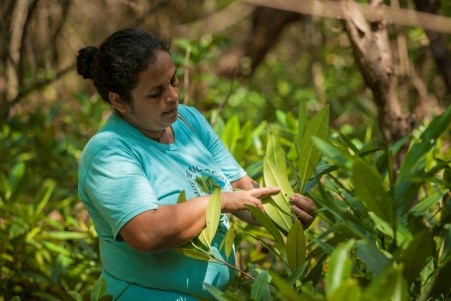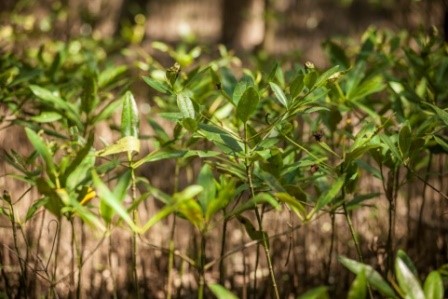


Sous la direction de l'association Istatén et du comité du micro-bassin d'El Aguacate, les mesures d'EbA suivantes ont été mises en œuvre en faveur des moyens de subsistance locaux et de leur résilience au changement climatique.
Les communautés ont ainsi mis en œuvre leurs propres solutions aux problèmes qu'elles avaient identifiés, sous la devise : " Rivière Paz : Vie, refuge et nourriture.
Ces mesures sont les suivantes :
- Le déblocage et l'élimination des sédiments des canaux de la mangrove pour permettre à l'eau douce d'entrer et de rétablir des niveaux de salinité optimaux.
- Reboisement des zones de mangrove dégradées (en raison de l'abattage aveugle et du pâturage du bétail).
- Surveillance communautaire des sites clés, avec des responsables désignés à tour de rôle, afin d'empêcher l'abattage des mangroves et l'extraction excessive d'espèces, et d'assurer la protection des jeunes plants dans les zones reboisées.
- Conception et mise en œuvre d'un plan local d'utilisation durable (PLAS) qui réglemente l'extraction dans la mangrove de poissons, de crustacés (crabes et crevettes) et de mammifères (périodes, quantités et pratiques), en vue d'une gestion durable des espèces.
Ces mesures visent à accroître et à gérer la zone de reproduction des espèces les plus intéressantes sur le plan économique et alimentaire. En outre, la restauration des mangroves a amélioré la protection contre les tempêtes et les vagues.
La mise en œuvre conjointe avec les associations de développement communautaire facilite la prise de décision et les actions collectives en faveur de la mangrove.
- L'association Istatén comprend trois communautés (Garita Palmera, El Tamarindo et Bola de Monte). Elle a été créée en 2011 dans le but de surveiller la mangrove au niveau communautaire.
- Le comité du micro-bassin versant de la rivière Aguacate, créé en 2012, travaille sur les défis environnementaux avec une approche par bassin. Le groupe comprend 40 représentants locaux.
- Il est essentiel de soutenir les efforts de restauration par des études biophysiques qui fournissent des données pour le suivi et l'évaluation et une meilleure prise de décision concernant les sites d'intervention ou les mesures adoptées, en particulier le dragage des chenaux et les actions de reboisement. Il est également essentiel de compléter ces études par les connaissances empiriques des communautés, en générant une base de données techniques, scientifiques et sociales pertinentes et durables.